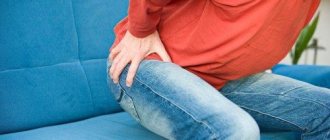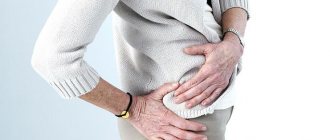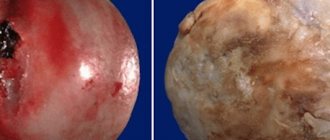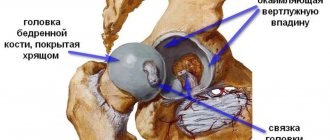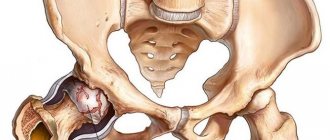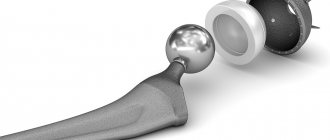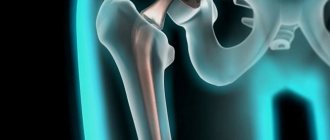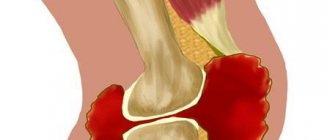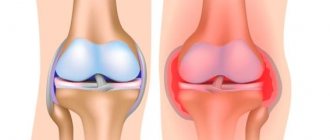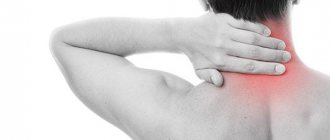At your initial appointment, you will be examined by an orthopedic traumatologist, Candidate of Medical Sciences, with more than 20 years of experience.
The doctor will make a diagnosis, and you will receive a consultation with recommendations for a further treatment plan.
How is the treatment carried out?
To relieve acute pain, an intra-articular block is performed. If the pain is chronic, constant, then the blockade is not done. Then, after 3-4 days, when the inflammatory process has stopped (the pain has transferred to the chronic stage), you need to begin manipulating with manual techniques. Then, over the course of a month, 2-3 intra-articular injections are performed with an interval of 7 days, necessary to normalize the functioning of the sliding surface of the joint. In parallel with the injections, you undergo manual therapy and physiotherapy procedures aimed at the influx of beneficial components into the synovial fluid of the joint by improving blood circulation. The course of treatment takes approximately 30 days. To consolidate the results obtained, it is recommended to undergo a course of exercise therapy, several massage sessions and physiotherapeutic procedures. You also receive recommendations from your doctor on how to maintain your compensation status (diet, physical activity).
Indicative treatment plan:
The course of treatment is individual. On average it includes:
- 1 intra-articular block
- 3 intra-articular injections
- 6 manual therapy sessions
- 2 intermediate consultations (free)
The medical center has:
- Exercise therapy room, “Exart” simulator;
- Physiotherapeutic equipment (laser therapy, electrophoresis, magnetic therapy);
- Attending physicians who can help with this disease: chiropractors, hirudotherapists, reflexologists, nutritionists, physiotherapists;
- Treatment room with drugs used in the treatment of coxarthrosis.
What is stage 2 coxarthrosis?
Before answering this question, you need to understand what a healthy joint is. So, the joints have a strong and elastic layer of connective tissue (cartilage). This layer ensures the sliding of the joint elements and ensures proper distribution of the load on the joint. These processes cannot occur without articular exudate (synovial fluid), which is located in the joint capsule. The exudate lubricates and nourishes the cartilage. One of the possible degenerative-dystrophic pathologies of the ligamentous apparatus is deforming coxarthrosis. With coxoarthrosis, the synovial fluid thickens and decreases in volume, and the cartilage ceases to receive nutrients in the required quantities. Because of this, it becomes inelastic and rough, cracks form on its surface, the cartilage ceases to fully perform its function and becomes thinner. The distance between the joint elements decreases, during movement the bones rub against each other, this is accompanied by unbearable pain. Without medical care, bones become deformed and osteoarthritis deformans (OA) develops.
Causes
There are many reasons for the development of coxarthrosis, although in rare cases it occurs in the absence of any prerequisites. In this case, they speak of the presence of primary or idiopathic coxarthrosis. In the vast majority of cases, secondary coxarthrosis is diagnosed, which becomes a logical consequence of a number of diseases or changes in the condition of the musculoskeletal system. Its development can be provoked by:
- injuries of the hip joint of various types, including fractures, dislocations, bruises, sprains or torn ligaments;
- heavy physical labor, professional sports, especially weightlifting, parachuting, jumping sports;
- sedentary lifestyle;
- excess weight, which significantly increases the load on the hip joints;
- foci of chronic infection in the body;
- congenital abnormalities of the hip joints, such as dysplasia or dislocation;
- metabolic pathologies and endocrine disorders, in particular gout, diabetes mellitus, especially in decompensated form;
- aseptic necrosis of the femoral head, which may be a consequence of a femoral neck fracture, especially during conservative treatment;
- inflammatory joint diseases, including rheumatoid arthritis, bursitis, tendinitis;
- diseases of the spine;
- genetic predisposition;
- presence of bad habits, especially smoking.
Nevertheless, the main cause of coxarthrosis is still inevitable age-related changes, and the presence of the above factors only increases the likelihood and speed of its development.
Diagnostics
After examining and collecting anamnesis, the doctor will prescribe a number of additional tests and examinations:
- X-ray. This is a key diagnostic method. With its help, the doctor will be able to determine the presence of pathological changes in bone tissue. At stage 2, the image will show a thickening of the neck, a mushroom-shaped femoral head, and ossification of the cartilaginous labrum.
- Ultrasound;
- CT;
- MRI;
- puncture;
- Blood and urine analysis.
The diagnosis is made based on the diagnostic results obtained. Only after making a diagnosis and finding out the root cause of arthrosis, the doctor prescribes treatment. The initial stages of coxarthrosis are treated conservatively (drugs, physiotherapy, exercise therapy). If pathological changes are detected at stage 3, then surgery cannot be avoided.
Treatment with folk remedies
It is possible to treat grade 2 arthrosis of the hip joint using traditional methods, but again in an integrated approach. In most cases, compresses and heating are used to help reduce the swelling of the inflamed area.
Alcohol compresses may include honey, iodine, aloe juice, and other substances that irritate nerve endings and cause a rush of blood to the site of inflammation, thereby improving circulation and reducing swelling.
Folk remedies never exclude traditional therapy!
Is it possible to cure coxarthrosis without surgery?
Timely treatment begins significantly increases the chances of recovery. At the second stage, it is impossible to cure the disease with ointments or folk remedies alone, since at this stage the cartilage and bones are already damaged. There is no point in hoping for self-healing and believing that deformed bones will return to their former shape. Treatment at the second stage is aimed at reducing pain, improving the gliding of cartilage surfaces, and improving joint mobility. This can only be achieved with complex therapy. Positive dynamics can be achieved by simultaneously using medications with manual therapy, therapeutic exercises, physiotherapy, folk remedies and diet. The prognosis of the disease largely depends on how the patient follows all medical recommendations. If you are negligent about your health, surgery cannot be avoided.
Treatment
Diagnosed coxarthrosis requires rational pathogenetic and symptomatic therapy. It is possible to treat hip arthrosis by influencing the etiology (i.e., the cause of its occurrence), but modern medicine cannot guarantee absolute recovery, not to mention treatment with folk remedies, but an integrated approach to therapy will return the patient to an almost optimal physical condition.
Effect on symptoms
Elimination of the pain syndrome that constantly accompanies grade 2 arthrosis of the hip joint requires the use of anti-inflammatory analgesic drugs. Pain is the body's first signal about disturbances in it.
The use of strong painkillers at this stage is not provided; non-steroidal anti-inflammatory drugs are sufficient:
- Diclofenac.
- Aceclofenac.
- Ibuprofen.
- Nimesulide.
- Ketoprofen.
- Meloxicam, Piroxicam, etc.
Treatment with NSAIDs is carried out in tablet forms; during an exacerbation, injections of drugs with the same active substance may be prescribed. A one-time dose of the drug per day during or after meals is sufficient (this will reduce the degree of side effects).
Relieving symptoms with NSAIDs is rational, but one should be aware of possible side effects. This is especially true for the degree of damaging effect of drugs on the walls of the stomach (ulcerogenic effect). The severity of side effects of NSAIDs in decreasing order: Indomethacin = Acetylsalicylic acid > Piroxicam > Phenylbutazone > Diclofenac = Ibuprofen. Talk to your doctor about ways to reduce your risk of side effects from taking NSAIDs.
The drugs of choice for the symptomatic treatment of arthrosis of the hip joint should be NSAIDs that inhibit COX-2, since the benefit/side effect ratio in this case outweighs this group of drugs.
Pathogenetic treatment
Degenerative-dystrophic disorders that accompany stage 2 arthrosis of the hip joint require a compensatory approach to treatment: damage to bone and cartilage tissue stimulates the growth of osteophytes, which, if left untreated, will lead to stage 3 arthrosis with all the ensuing consequences. This function will be performed by drugs from the group of chondroprotectors:
- Chondroitin sulfate sodium;
- Glucosamine sulfate;
- Hyaluronic acid.
Doctors recommend treating grade 2 coxarthrosis initially with injections, and then switching to tablet forms.
More information about chondroprotectors:
- Chondroitnesulfate. Acts as a “lubricant” for the joint complex and is a natural substance produced by chondrocytes in our body. An integral component of comprehensive wellness.
- Glucosamine. Stimulates the production of hyaluronic and chondroitinsulfuric acid, being a building material of cartilage and bone tissue, fluid inside the joint.
- Hyaluronic acid. The structural element of the intra-articular fluid significantly influences the course of the inflammatory process.
The use of combination drugs in the treatment of arthrosis
There are combination drugs that include both chondroprotectors and NSAIDs (Teraflex Advance, Movex, Active, etc.).
The combination of chondroprotectors with NSAIDs can significantly reduce the side effects of painkillers and reduce the amount of the latter consumed.
Let us highlight Diacerein separately: it belongs to both groups simultaneously, has corresponding effects on the joint and inflammatory processes in it, additionally having an anti-catabolic and anabolic effect. In the treatment of stage 2 arthrosis, it gives an effect for 6 weeks.
Diacerein is a drug that includes chondroprotectors and NSAIDs.
It should be noted that the drug Alflutop is a medicine based on extracts from marine organisms. Has anti-inflammatory, analgesic effect. It acts at the macromolecular level and stimulates regenerative processes. The complex of amino acids, minerals, and peptides has a comprehensive effect on the source of hip inflammation and has a beneficial effect on the renewal of cartilage structure. The drug is administered deeply intramuscularly, 1 ml for 20 days, or 1-2 ml into each hip joint, followed by intramuscular treatment. The course of treatment is repeated every six months.
Tests for coronavirus
- Test for coronavirus
- Coronavirus test for organizations
- Testing for coronavirus at home
- Testing for coronavirus at home in 12 hours!
- Testing for coronavirus in Lyubertsy in 12 hours!
- Testing for coronavirus in Nekrasovka in 12 hours!
- Testing for coronavirus in Korolev in 12 hours!
- Test for coronavirus on the Sokol metro station
- Coronavirus test at Kolomenskaya metro station
- Coronavirus test at Voykovskaya metro station
- Test for coronavirus in Nekrasovka
- Coronavirus test in Korolev
- Test for coronavirus in Lyubertsy
- Test for coronavirus in Mytishchi
- Test for coronavirus at home Mytishchi
- Test for coronavirus at home Korolev
- Test for coronavirus at home Lyubertsy
- Test for coronavirus at home Nekrasovka
Any tests can be taken at clinics in the East Clinic network.
Life is motion
Treatment of coxarthrosis is a complex effect. The physiotherapist, based on the testimony of the attending physician, will determine the load allowed for you, create a sequence of exercises that will specifically develop the mobility of the hip apparatus, and give recommendations for their implementation for effective treatment. Wellness massages that increase joint mobility can be prescribed.
Read the article about massage for coxarthrosis of the hip joint.
What should you pay attention to?
Features of treatment of coxarthrosis:
- Physiotherapy is excluded during an exacerbation of grade 2 arthrosis.
- The clinically significant effect of taking chondroprotectors in the treatment of arthrosis of the hip joint appears after 4-6 weeks of regular use.
- The introduction of Alflutop into the hip joint is accompanied by increased pain.
- Treatment of arthrosis with Diacerein is contraindicated in patients with gastrointestinal pathologies.
- Vitamins A, C and trace elements increase the effectiveness of glucosamine.
- The use of chondroprotectors in the treatment of grade 2 arthrosis is not recommended for pregnant women.
Early diagnosis of arthrosis of the hip joint and comprehensive treatment can prevent many complications and give the patient an absolute opportunity to restore the hip apparatus and lead a full healthy lifestyle without severe exacerbations of arthrosis.
Dear readers, leave your opinion about the article in the comments; Tell us how you fought this disease.
Diet, proper nutrition
In treatment, it is important to adhere to proper nutrition, which will restore cartilage. You need to give up junk food.
Reducing salt, sweets, and giving up alcohol will have a good effect. It is forbidden to use decoctions from bones.
To nourish the skeletal system, doctors recommend seafood dishes, greens, berries, and grains.
You should refuse baked goods made from premium flour; instead, it is better to include whole grain products in your diet. Food should be steamed or baked.

